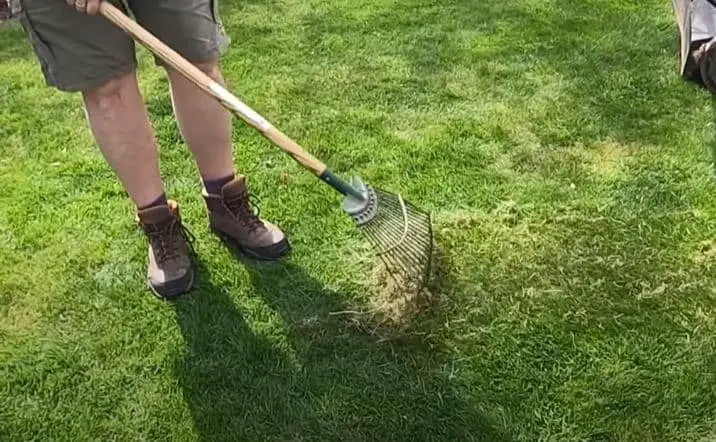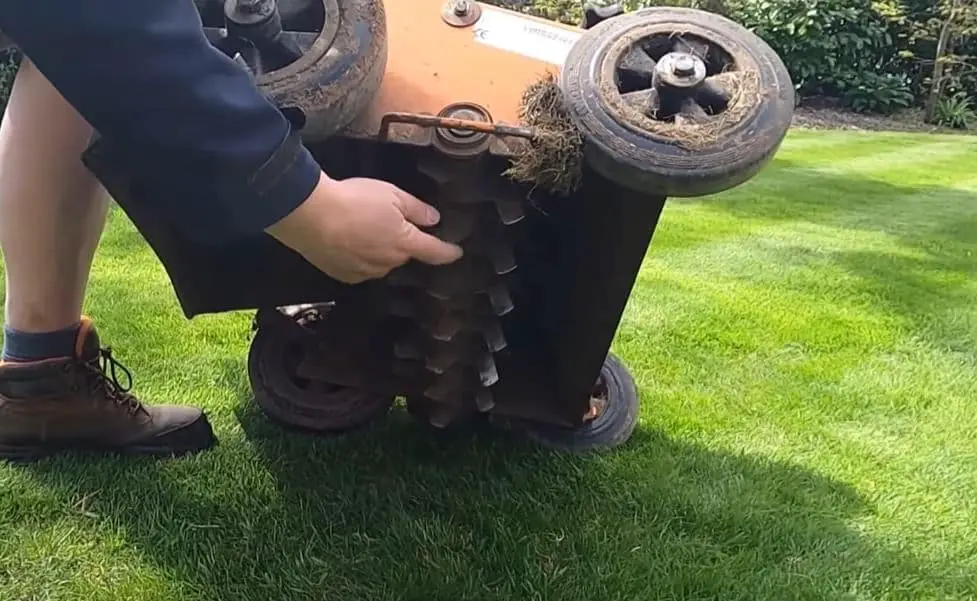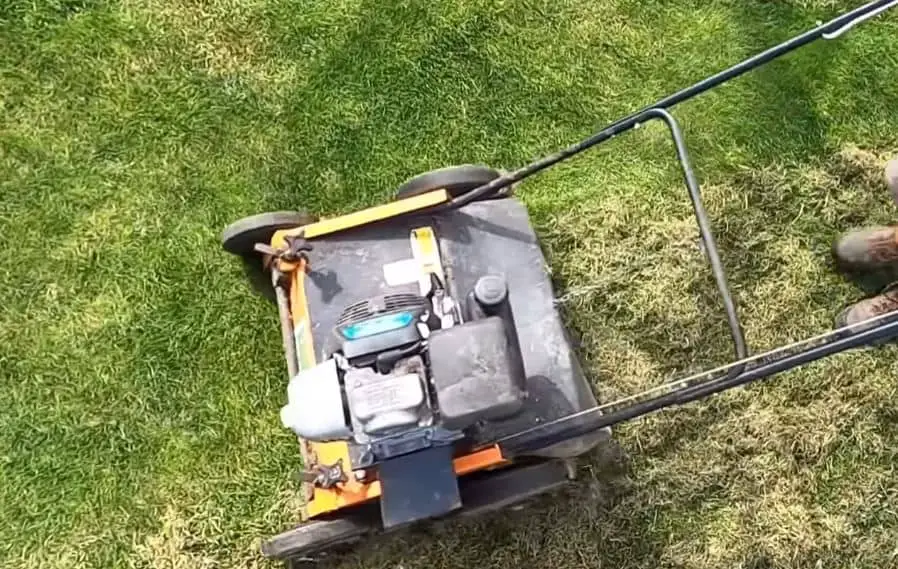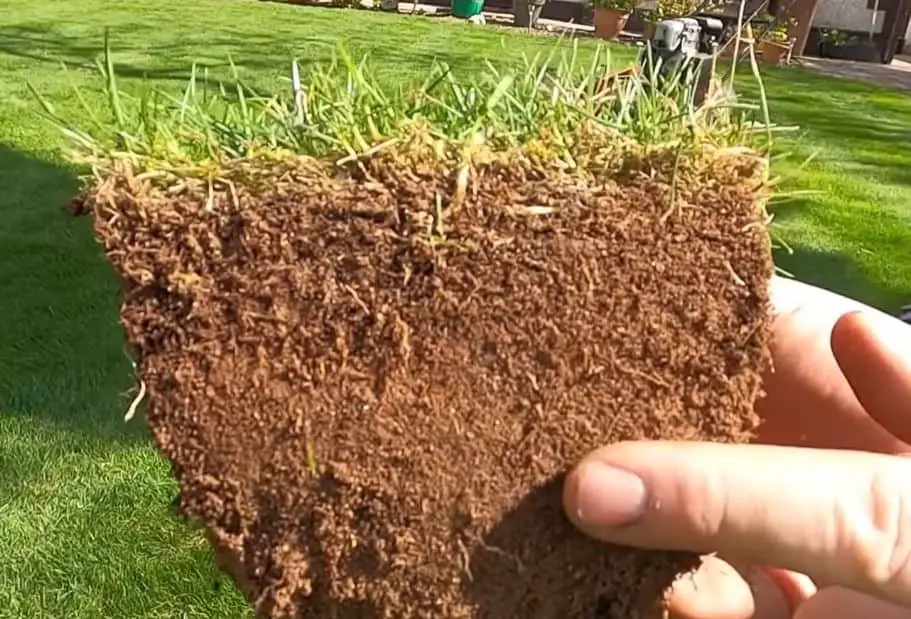What is Raking and Scarifying?
When it comes to maintaining a beautiful lawn, there is a great deal of effort that has to be put into it. One of the most important parts of lawn care is getting rid of the debris and dead grass that can accumulate on the surface, preventing the grass from growing strong and healthy.
There are two common methods for removing this debris from lawns: raking and scarifying. However, many people do not know which one to use and even confuse the two.
In this blog post, we will explore the differences between raking and scarifying, and provide tips on when and how to perform each task to achieve a lush and healthy lawn. Whether you’re a seasoned lawn care expert or just starting out, this guide will help you understand the benefits of raking and scarifying, and choose the best method for your lawn.
What is Raking?
The task of raking involves removing leaves, sticks, and other debris from the lawn’s surface. A layer of dead grass, roots, and other organic matter that can accumulate on the surface of the soil and prevent water, air, and nutrients from reaching the roots of the grass is called thatch. It is common to use a rake to remove debris from the lawn, it’s a tool with flexible tines.
When it comes to raking your lawn, a lot will depend on whether or not it’s wet, shady or perhaps if it’s on clay soil, so if your lawn is wet, shady or especially if it’s on clay soil, then it’s likely you’ll need to do some raking.
It is therefore important to be prepared, regardless of whether you like it or not. Don’t hide your head in the sand and hope it will go away. It won’t, and it will keep getting worse and worse until there is nothing left! To deal with thatch and moss problems effectively, it is best to deal with them early. If you let the problem get CRITICAL, you might not be able to save your lawn!

It is usually done in the spring, but it can also be accomplished in the autumn when scarifying is needed.
The roller lawn scarifier is ten times easier to use, and it removes both moss and thatch. Raking the lawn by hand can be quite exhausting since the rake requires a lot of pressure or in layman’s terms effort.
What is Scarifying?
In contrast, scarifying is a more aggressive process to help remove a build up of thatch and debris from deeper within the lawn.
The most common method of removing thatch from a lawn or garden is by using a scarification machine, which is designed to cut through the thatch and loosen the soil, in order to improve the flow of air and water.
The grass roots need nutrients, water, and oxygen in order to grow healthy and strong, so when you scarify your lawn it helps to ensure that they receive this. The best time for lawn scarification is in the spring or autumn when the grass is actively growing, and the soil should not be overly wet.
In order to determine whether or not your lawn requires scarifying or dethatching, the grass type is a big factor. If you have anything other than a mainly rye grass lawn, then you must do it at some point. And if you have a lawn with fine fescue grasses, you need to start loving scarifying.
In scarifiers, blade tines are often swiveled around a central axle rather than being fixed or rigid. As a result, they flick out of the way if they hit something hard. Suitable for lawns that are rarely super flat, they reduce damage significantly and reduce the machine’s stress.

As the blades cut downward rather than cross-cutting like a mower, they also ‘prune’ the grass plants. The turf is thickened by this pruning, just as a bush or plant is thickened by pruning.
Whenever possible, scarification should be carried out in the autumn, with only light scarification taking place in the spring.

So Raking is another way to say de-mossing the lawn whereas Scarifying is another way of saying de-thatch your lawn.

What’s the difference between scarifying and raking? is there a difference?
Scarification, as mentioned above, involves the removal of thatch from the top layer of soil in your lawn. Raking, on the other hand, involves removing loose debris such as leaves, dead moss and grass clippings.
A rake typically wouldn’t be used for thatch removal since it’s inefficient and takes too long. Rakes’ prongs don’t penetrate deeply into the soil enough to remove thatch. Chances are, a rake will glide right over it.
You should begin by raking loose leaves and debris, then dethatching or scarifying the thicker build-up below with a dethatcher or scarifier. You can keep your lawn thatch free all year round if you combine scarification, raking, and dethatching!
So if you have a lawn, raking and scarification helps with your lawn maintenance and you as a gardener need to plan it into your gardening to do calendar.
